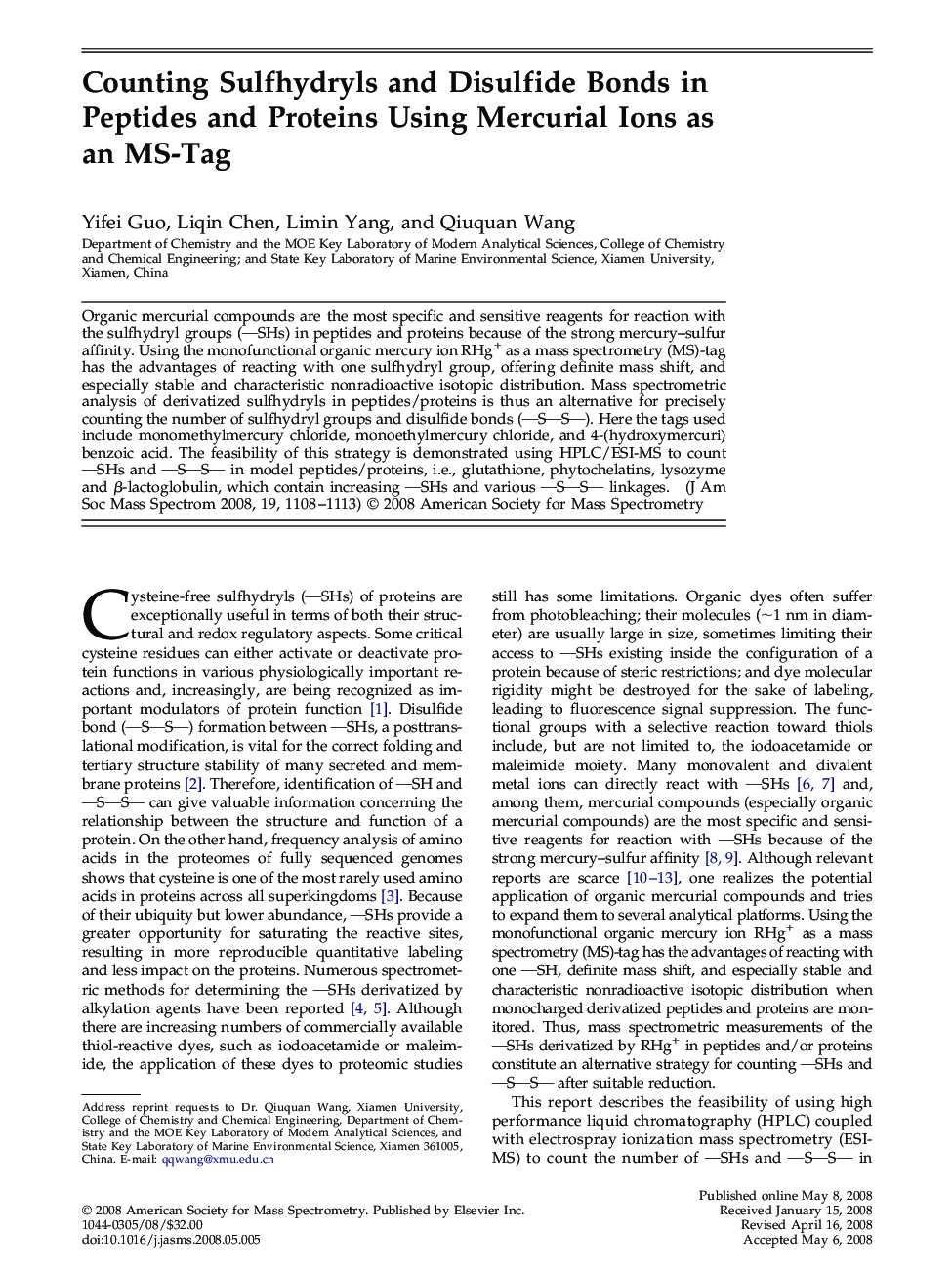| کد مقاله | کد نشریه | سال انتشار | مقاله انگلیسی | نسخه تمام متن |
|---|---|---|---|---|
| 1195886 | 964421 | 2008 | 6 صفحه PDF | دانلود رایگان |

Organic mercurial compounds are the most specific and sensitive reagents for reaction with the sulfhydryl groups (SHs) in peptides and proteins because of the strong mercury–sulfur affinity. Using the monofunctional organic mercury ion RHg+ as a mass spectrometry (MS)-tag has the advantages of reacting with one sulfhydryl group, offering definite mass shift, and especially stable and characteristic nonradioactive isotopic distribution. Mass spectrometric analysis of derivatized sulfhydryls in peptides/proteins is thus an alternative for precisely counting the number of sulfhydryl groups and disulfide bonds (SS). Here the tags used include monomethylmercury chloride, monoethylmercury chloride, and 4-(hydroxymercuri) benzoic acid. The feasibility of this strategy is demonstrated using HPLC/ESI-MS to count SHs and SS in model peptides/proteins, i.e., glutathione, phytochelatins, lysozyme and β-lactoglobulin, which contain increasing SHs and various SS linkages.
Journal: Journal of the American Society for Mass Spectrometry - Volume 19, Issue 8, August 2008, Pages 1108–1113